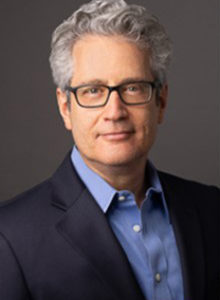New York Psychotherapy and Counseling Center (NYPCC) has been working with newly arrived immigrants since inception in 1974. With the majority of our clinicians bi-lingual, we pride ourselves in meeting the mental health needs of our Latinx population through a culture lens. It’s one thing to work with such clients, it’s another to see how their journey begins. NYPCC has been in partnership with the National Latino and Hispanic Mental Health Technical Transfer Center (NHLMHTTC) for webinars and trainings over the last few years. I recently went to McAllen Texas for the NHLMHTC annual meeting and had the opportunity to take two field trips: to an immigrant respite center in McAllen and to an immigrant camp in Reynosa Mexico to learn about their journeys and mental health concerns. The Center partners with the University of Texas Rio Grande Valley whose psychology department staff and students are doing research and interventions at both sites.
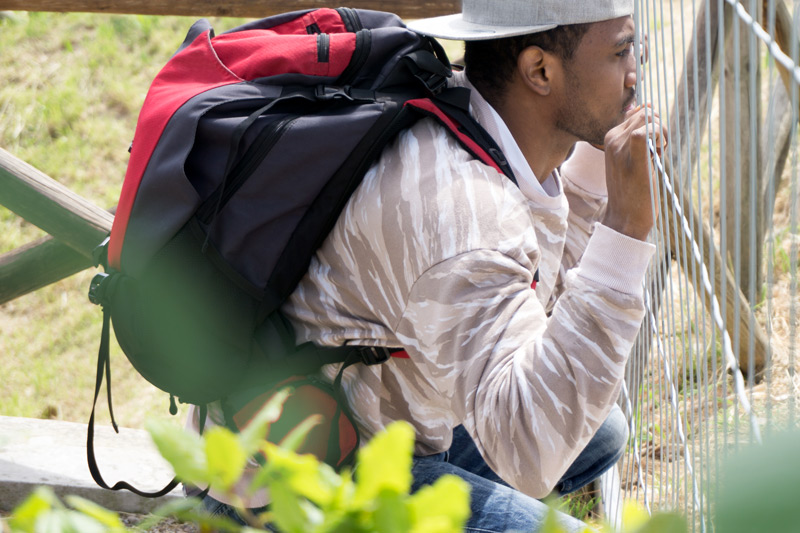
The Catholic Charities Humanitarian Respite Center located in downtown McAllen, helps families with their transition to a new, uncertain world. The respite center provides support to recent asylum seekers families that have been processed by U.S. immigration officials and assist with food, clothing, shelter and needed medical services. The center welcomes up to 300 individuals a day serving over 100,000 immigrants as they prepare for their final journey to friends or relatives in the United States.
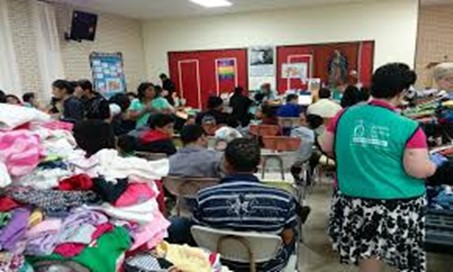
The Catholic Charities Humanitarian Respite Center
Before they can get to the Respite Center, migrants both deported and nationals (and foreigners) seeking to cross into the United States must wait in an immigrant camp in Reynosa, Mexico. It was here that we crossed over the Rio Grande via the Hidalgo Bridge and met up with Universidad Autonoma de Tamaulipas, Aztlan Campus of Reynosa with both faculty and students who work with migrant populations to discuss their work and the mental health challenges of the communities they serve.
We visited Casa del Migrante Reynosa, a camp that offers a safe place for migrants passing through the city of Reynosa, providing them with information on their rights and duties, free basic services during their stay, such as: food, clothing, personal hygiene items, phone calls, medical care, psychological care, procedures for some personal documents, etc., promoting their family reunification.
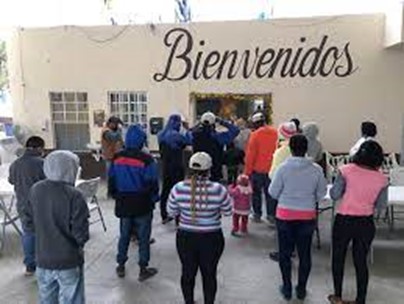
Casa del Migrante Reynosa
It was during these trips that I was able to speak with the volunteer staff about the mental health challenges and trauma families experience daily. I saw families huddled together, witnessing the blighted quarters, lack of privacy, and children of all ages with nothing to do all day, that gave me a perspective you don’t get by watching news reports or reading articles. It was an experience that put me intimately in touch with the challenges and hardships that many of our NYPCC immigrant clients and families must endure before getting into the US.
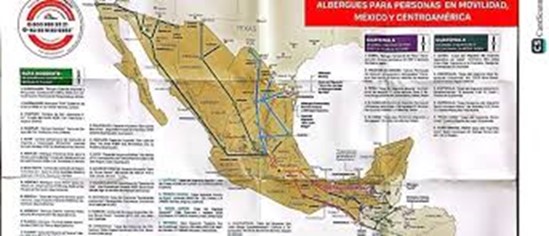
Current Migration Routes Through Mexico
Initial Steps Working with Newly Arrived Asylum Seekers
While there are push-pull motivating factors that cause people to migrate, each newly asylum seeker has his or her own set of characteristics that, in interaction with the environment, may place them in varying positions of resilience or vulnerability resulting in acculturative stress (Berry, 1997). The phases of the migration process: premigration, during migration, and postmigration, have specific risks and exposures that may differentially impact youth mental health outcomes including trauma. This information should be compiled and used to inform interventions, including effects of migration, experiences of racism and discrimination, language and educational barriers, and access to services and resources.
As clinicians we need to key in on how clients’ migration undertaking is perceived, expressed and how they make meaning of the experience to help them heal from trauma. Making meaning is influenced by many factors related to culture, in understanding why something happened, spiritual rituals associated with meaning and closure, level of social connection and support, and help-seeking practices. This includes norms for where to seek support, whether from family, friends, community leaders, religious or spiritual leaders, or mental health professionals. Making meaning of trauma is also influenced by the broader impact of any generational or historical trauma, which influences cultural identity and how families and communities understand current experiences of trauma. EX: Espiritismo (Wilson, 2007; Kirmayer, 2003).
At NYPCC we work with many newly arrived asylum seekers who face trauma reminders over an ordinary day – the whole world seems dangerous, and no adult seems deserving of trust. Keeping that in mind, here are some best practices:
- Engagement should be helpful, voluntary (at their own pace) based on trust with all family members; not only to increase the benefits of treatment, but also to ensure the family will accept your recommendations and referrals.
- Tune into culture specifics and norms and be able to identify behaviors that may be a trauma response. Listen to the family’s concerns, acknowledge the importance of their expressed primary problems, and address first the basic or most urgent needs.
- Don’t assume you know the answers – ask and state your reason for asking – many who have not established trust will be wondering about the information they share and if you will use it against them.
- Ask about their journey – we all have stories we can learn from; this may be the first time they have ever told it to someone outside of their circle.
- Focus on aspects of the mental health services that relate to the family’s expressed values, such as supporting a child’s academic success.
- Cultural differences between the individual and the clinician may also impact the level of communication. Misunderstandings of these expectations and the expression of values may lead to difficulties for the clinician in soliciting symptoms, difficulties in developing needed therapeutic rapport, and a misunderstanding of the significance of symptoms.
For more resources and strategies when working with asylum seekers and recently arrived immigrants, please visit https://mhttcnetwork.org/centers/global-mhttc/resources-support-mental-health-refugees-and-asylum-seekers.
Contact Scott Bloom, LCSW, is Director of Special Projects & Initiatives at The New York Psychotherapy and Counseling Center. For more information, email SBloom@nypcc.org or call (347) 352-1518.
References
Berry, John. Immigration, Acculturation, and Adaptation. Applied Psychology. Volume 46, Issue 1. January 1997.
Cleary, S. D., Snead, R., Dietz-Chavez, D., Rivera, I., & Edberg, M. C. (2018). Immigrant Trauma and Mental Health Outcomes Among Latino Youth. Journal of immigrant and minority health, 20(5), 1053–1059. https://doi.org/10.1007/s10903-017-0673-6
Kirmayer, L. J., Groleau, D., Guzder, J., Blake, C., & Jarvis, E. (2003). Cultural consultation: A model of mental health service for multicultural societies. Canadian Journal of Psychiatry, 48(3), 145–153.
Wilson, J. P., & So-Kum Tang, C. C. (Eds.). (2007). Cross-cultural assessment of psychological trauma and PTSD (pp. 3–30). New York, NY: Springer US.





